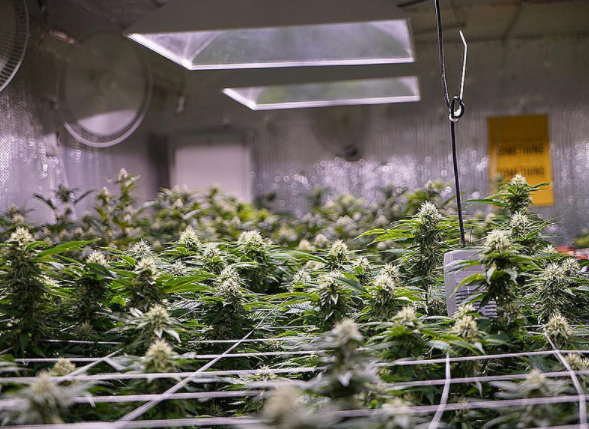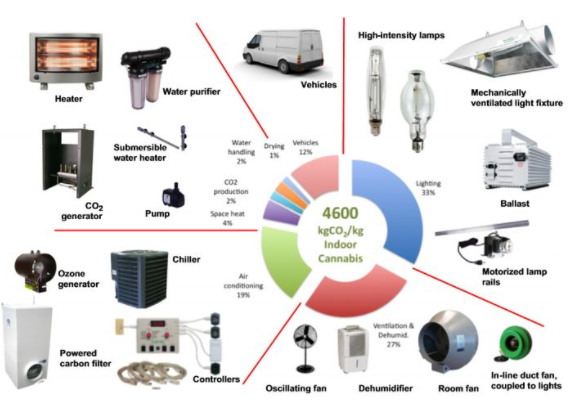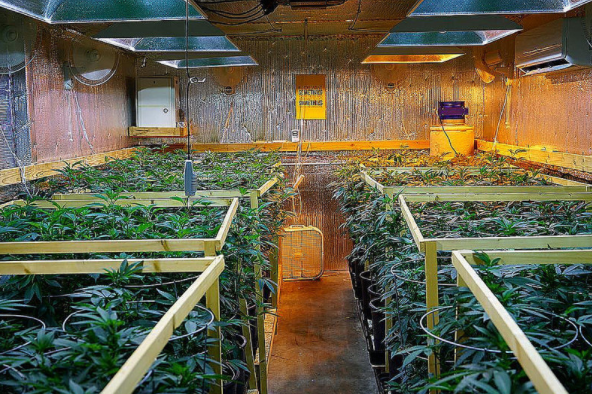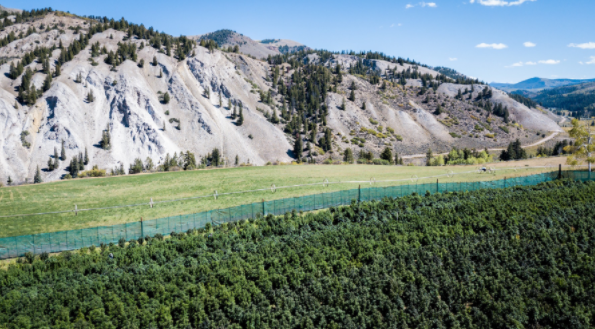Producing a kg of cannabis in an indoor cultivation emits 4600 kg of carbon dioxide and producing a marijuana cigarette is like leaving a bulb on during 25 hours. These kinds of cultivations need so much water and energy to work that it could be harmful to the environment. However, there are many ways to minimize their carbon footprint.

On average, producing one kg of processed cannabis indoors leads to the emission of 4600 kg of CO2 to the atmosphere. This measure is what is known as carbon footprint, a variable that measures the total amount of greenhouse gas emissions produced by human activities. For example, producing 1 kilogram of cannabis is equivalent to crossing the USA from coast to coast seven times by car. If we're talking about a single joint, instead, we could say that it's like leaving a light bulb on for 25 hours or like elaborating 8.5 L of beer. There's also the issue of water because, despite being surprisingly resistant, cannabis may need to be provided with lots of it, depending on the structure and the pot size. More and more countries are removing all restrictions regarding the use of cannabis, both for recreational and therapeutic use. In the States, where many territories have actually removed those restrictions, almost 2 out of 3 citizens are in favor of decriminalizing it, according to a recent report made by the consulting company Gallup. The figures, about 65 % of the population, are the highest in the last 50 years. With less fear of possible reprisals, an ever-growing market and an increasingly-open society, the cannabis industry has to increase its production levels. It is also true that more and more cannabis users are starting to grow their own plants, either at home or in the open air. This trend is driven by the pursuit of security and the desire to have a better control over the process and the yields. Unfortunately, though, this growing tendency can also lead to severe environmental damage: in order to grow, plants need a lot of energy that costs not only the owners but also the planet a lot. According to an investigation, published in 2011, the cannabis industry consumed 1 % of the total amount of energy consumed in the entire USA, a figure that supported another research study made last year claiming cannabis cultivations to consume $6 billion every year in energy, which is the amount of energy needed to supply 1.7 million homes.

Strategies for reducing the carbon footprint
In the words of Evan Mills, a Californian scientist specialized in climate change and energy, the cannabis industry could increase the efficiency of almost any stage of production. And increasingly more companies and individuals are doing their bit to reduce the carbon footprint of cannabis cultivations. Indoor crops are the ones that consume more energy and so the ones that cost the most. According to Mills, when growing cannabis indoors, six times more energy than the pharmaceutical industry is used, generating 15 million tons of carbon, which is the equivalent of the total emissions of three million cars. However, there are many ways to reduce the electricity costs thanks to a wide variety of science and technology-based innovative solutions. Although it's possible to use LED lights instead of HPS lights because they consume far less energy, it is true that plants don't produce equally generous crops. However, the lamps manufactured by the company Boulderlamp use less than half the energy of an HPS 100 W lamp. With a 315 W lamp of this manufacturer, the yield could be increased by 25 % while saving 45 % of energy, according to its founders. Some 'startups' have also come up with several ways in which cannabis growers could reduce their cultivations' carbon footprint without it affecting the product's quality. One of them is Scale Energy Solutions, who has created a system that mixes solar light with natural gas to lower the energy consumption of indoor cultivations by as much as 35 %. One of their secret consists in using the excess heat from the generators to supply air conditioners.
Using nature as a source of supply
There are still many growers who'd rather grow their cannabis plants outdoors to take advantage of the sunlight and the natural nutrients in soil. With no artificial light required, open air cultivations can turn out to be three times cheaper than indoor crops. The trouble is that many areas and climate zones may not be suitable for cannabis plants to grow, or maybe some state's policies aren't in favor of the cultivation of cannabis plants outdoors. A really successful example of this zero-carbon footprint marijuana cultivation thing is the one of Rob and Linda Trotter, an American couple that grows cannabis in their Ranch in Colorado using environmentally friendly techniques. All the energy their Ranch needs comes from a hydroelectric plant and plus their land benefits from incredibly favorable conditions: they're located at a height of 8200 feet, water comes directly from a pristine and there are incredibly large quantities of nutrients in soil as a consequence of the organic materials produced by the animals.





We just saw this. Nicely done. thank you, Rob Trotter of Pot Zero PS Our crops are producing high levels of CBG, the most sought after medical cannabinoid.